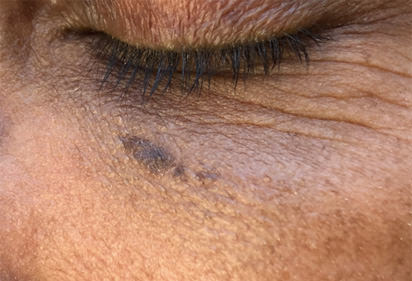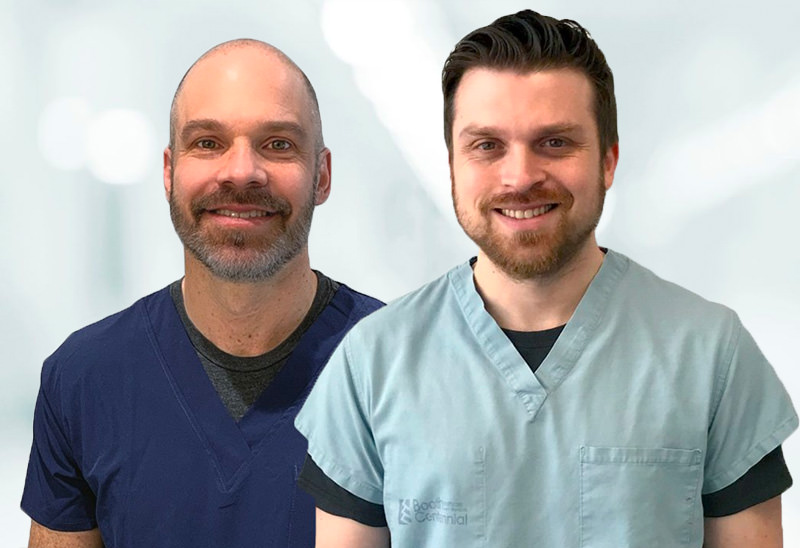The Centre for Minor Surgery
4025 Yonge St, Suite 205
Toronto, ON M2P 2E3
Phone: (416) 663-9649
Monday–Friday: 8 a.m.–4 p.m.
Other Skin Conditions

Our plastic surgeons at The Centre for Minor Surgery remove a variety of skin lesions with a quick, easy surgery performed in our office using a local anesthetic. With skin tag, age spot, and seborrheic keratosis removal in Toronto, they help patients from Barrie, Mississauga, Kitchener, Oakville, and other nearby communities put their concerns in the past and get on with enjoying their lives without delay.
Skin Tags
Skin tags are outgrowths of skin. They are often associated with pregnancy and weight gain. Skin tags are not dangerous and do not have the potential to turn into skin cancer.
What causes skin tags?
Skin tags are caused by friction—from clothing or skin-to-skin contact. They can occur anywhere on the body but are particularly common on the following areas:
- Neck
- Eyelids
- Armpits
- Groin
Once formed, skin tags will not disappear naturally.
Can skin tags be removed at home?
While it may seem simple to remove a skin tag yourself, there are multiple reasons it’s not a good idea, including:
- Pain
- Risk of infection
- Uncontrolled bleeding
- Skin irritation
How are skin tags removed?
Skin tag removal can easily be performed in our office setting. A small amount of local anesthetic is injected into the area, at which point the procedure becomes painless. The tag is surgically removed; very rarely are stitches required. Bathing and activity may return to normal immediately after the procedure.
Removal of skin tags is not covered by OHIP.
Will I have a scar after treatment?
Typically, a small scab forms where the skin tag was removed. The scab gradually lifts off, and once the scab is gone, there is typically a pink mark that eventually fades to a barely visible tiny white mark. Even very large skin tags can be removed without leaving much of a scar, as they usually have a narrow base.
Age Spots
Age spots are also known as solar lentigines and “liver spots.” They can sometimes be mistaken for skin cancers like melanoma but are benign conditions most often seen in individuals over age 50. The cause of age spots is not completely clear, but they are associated with chronic UV exposure and are more common in fair-skinned individuals.
What are some age spot removal options?
Removal of age spots is done for cosmetic reasons only. Treatments vary and may include:
- Bleaching creams
- Dermabrasion
- Surgical shaves
- Excisions done under local anesthesia
With age spots, prevention is the key. Avoiding excessive sun exposure and using sunscreen are the best preventive measures.
Can I treat age spots at home?
There are many over-the-counter creams and lotions available for treating age spots. The drawbacks are that they are not as potent as medical-grade products and require patience and diligence. Results take weeks to months of consistent daily application to achieve.
Seborrheic Keratoses
Seborrheic keratoses are brown, raised, textured, waxy skin lesions that appear “stuck on” to the skin’s surface. They are extremely common and can occur on the face, trunk, neck, and other body areas. The exact cause is unknown. Seborrheic keratoses are often mistaken for skin cancer due to their pigmentation patterns and irregular borders but are completely benign.
How do you treat a seborrheic keratosis?
If desired, we can remove these lesions using a simple local anesthesia procedure. The lesion is gently shaved off the surface of the skin. The resulting wound looks similar to a light abrasion and heals quickly.
Pyogenic Granulomas
Pyogenic granulomas are benign growths that originate from the small blood vessels in the skin or mucous membranes. They can be quite small, but they can also grow rapidly. They have a tendency to bleed, which naturally can be quite concerning.
What causes pyogenic granulomas?
These lesions often develop after very minor injuries such as a thorn prick to the tip of the finger or accidentally biting your lip. They can also develop sporadically, especially on the lips during pregnancy.
How are pyogenic granulomas treated?
Occasionally, small pyogenic granulomas can be treated by application of a chemical called silver nitrate. This chemical can cause the growth to dry out and eventually fall off. Oftentimes, however, pyogenic granulomas need to be removed surgically.
Surgical removal of a pyogenic granuloma is a quick, safe, and almost pain-free process no matter the size. Local anesthetic is injected into the area, the growth is excised, and some stitches are usually required to close the wound. Occasionally, pyogenic granulomas can reform after removal and may require additional treatment.
As pyogenic granulomas are benign, removal is not covered by OHIP.
Visit our FAQs page for more information about our centre and minor cosmetic surgery.
How do I get started?
To meet with one of the plastic surgeons at The Centre for Minor Surgery in Toronto, book a consultation using our online form or by calling
(416) 663-9649.
No referral is needed.
Book
Easy online appointment request – no referral needed
Treat
Same day procedures save you time
Go
Get back to your life without missing a beat

Meet Our Surgeons
At The Centre For Minor Surgery our goal is to provide excellence in surgical treatment for benign and cancerous growths. We strive to overcome the problem of long waiting times. No referral is needed to be seen by one of our Royal College-certified plastic surgeons.

